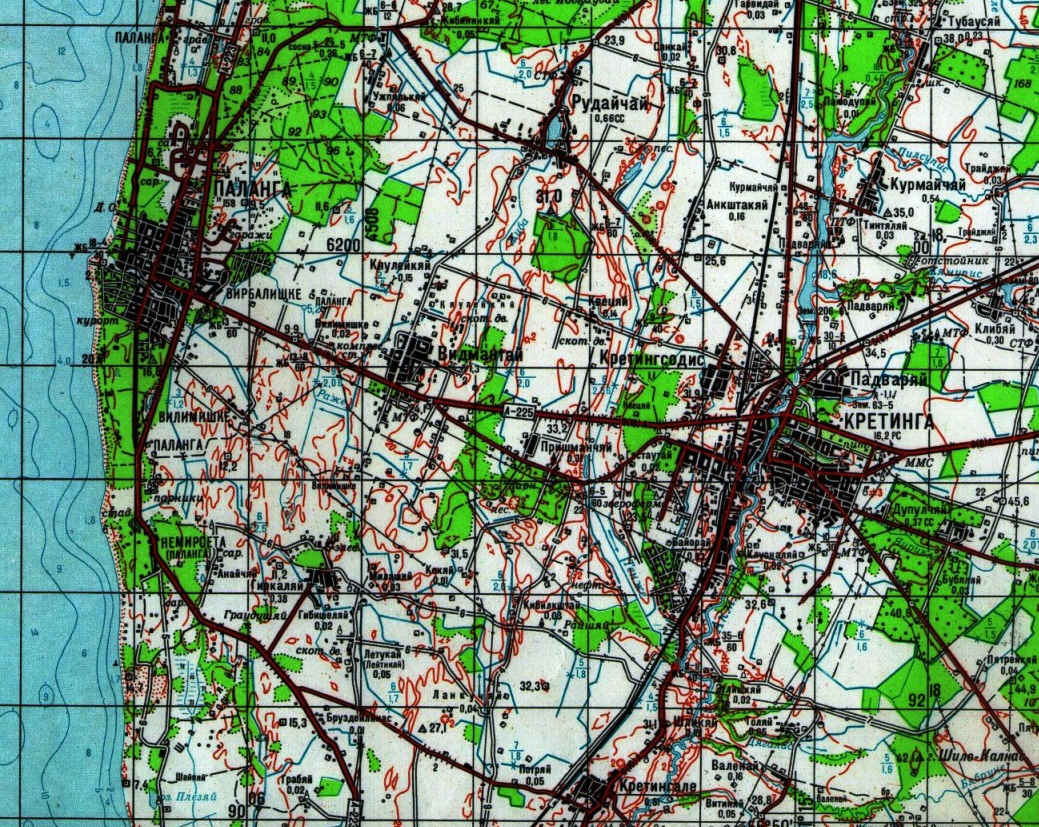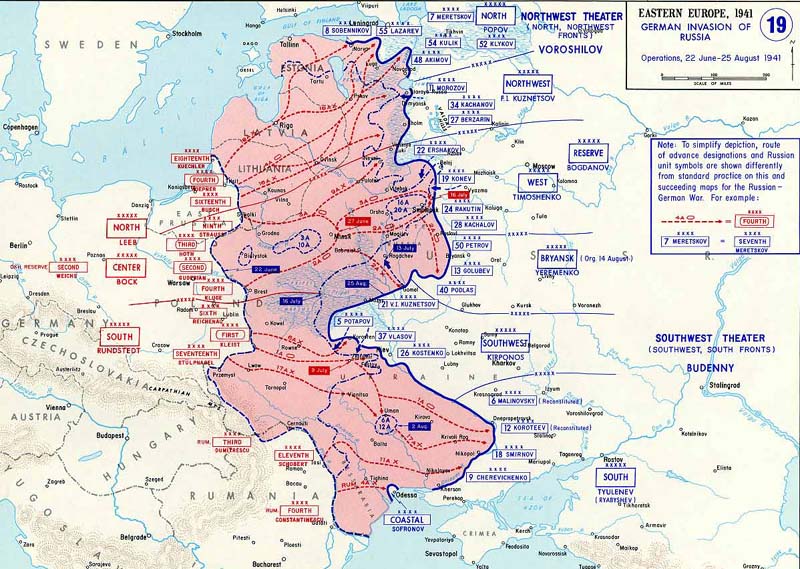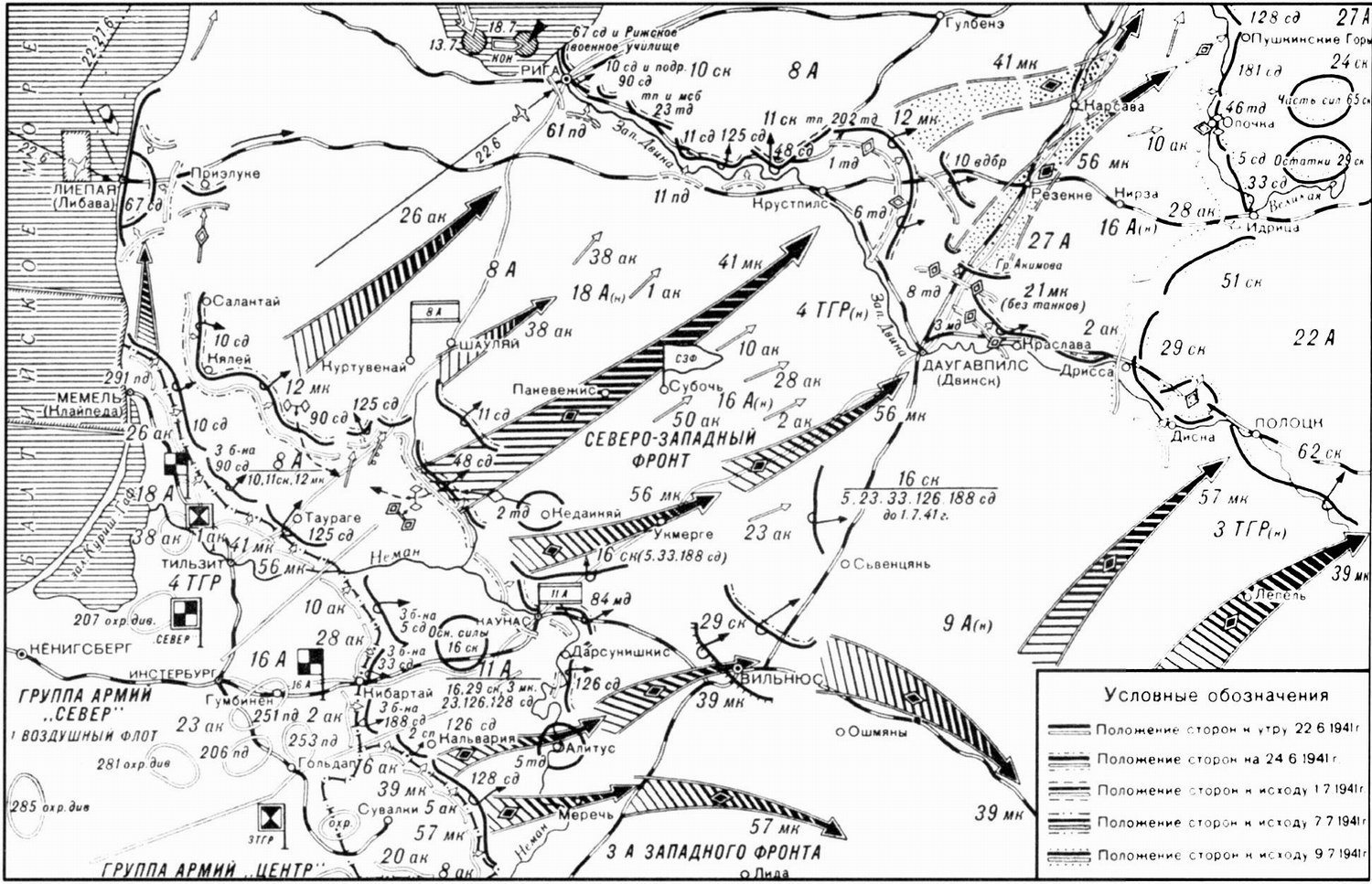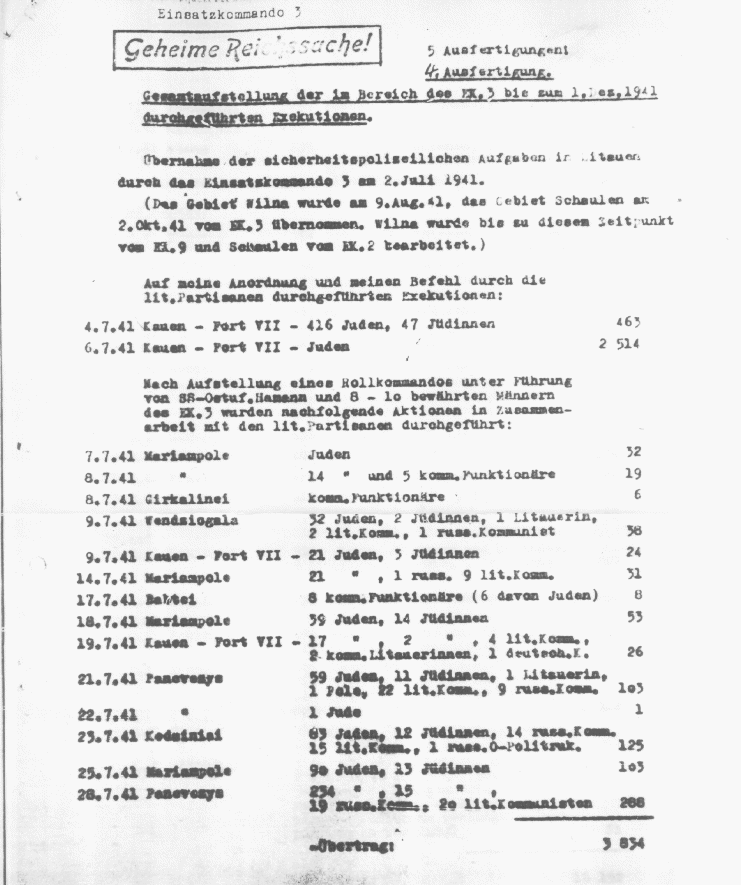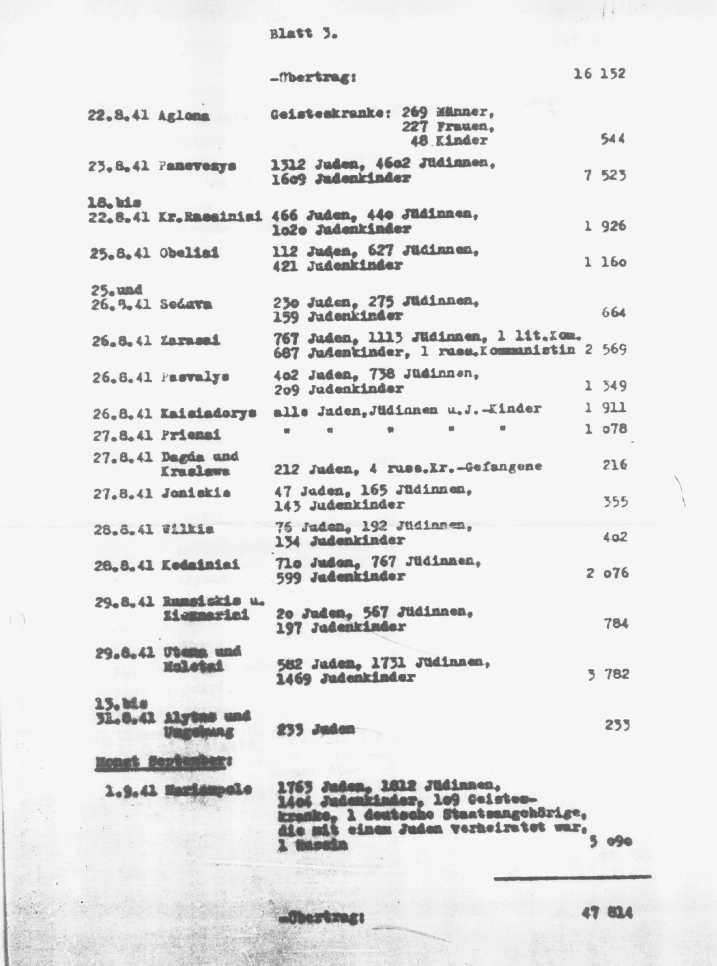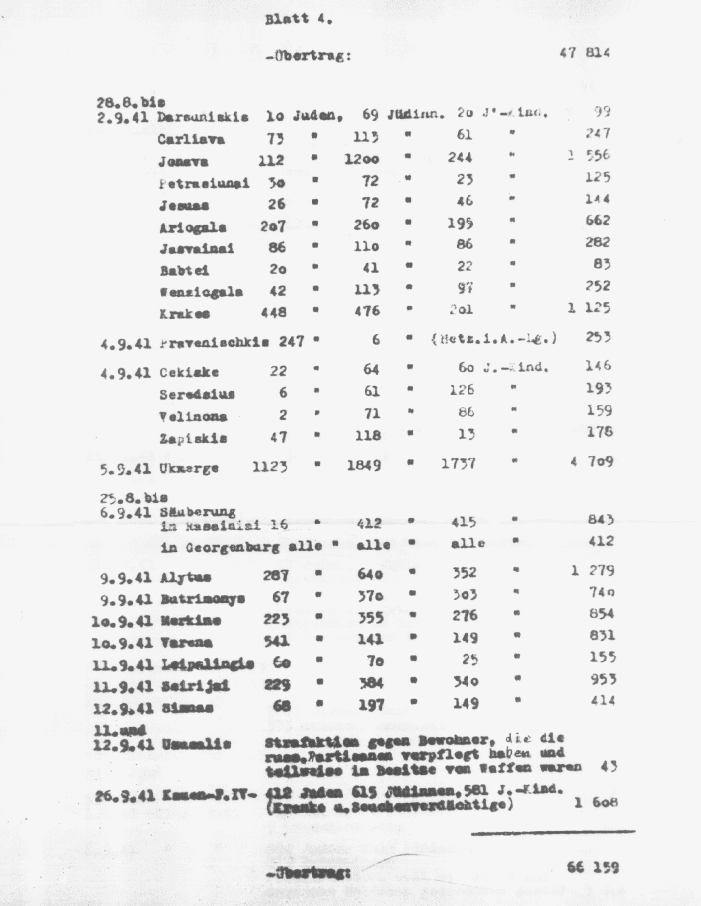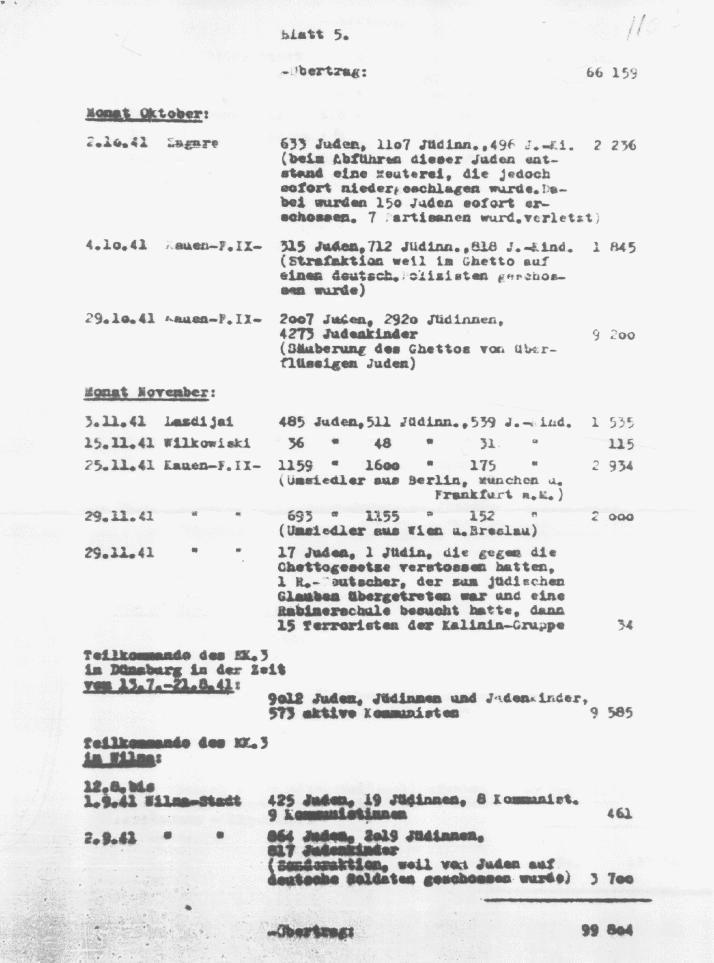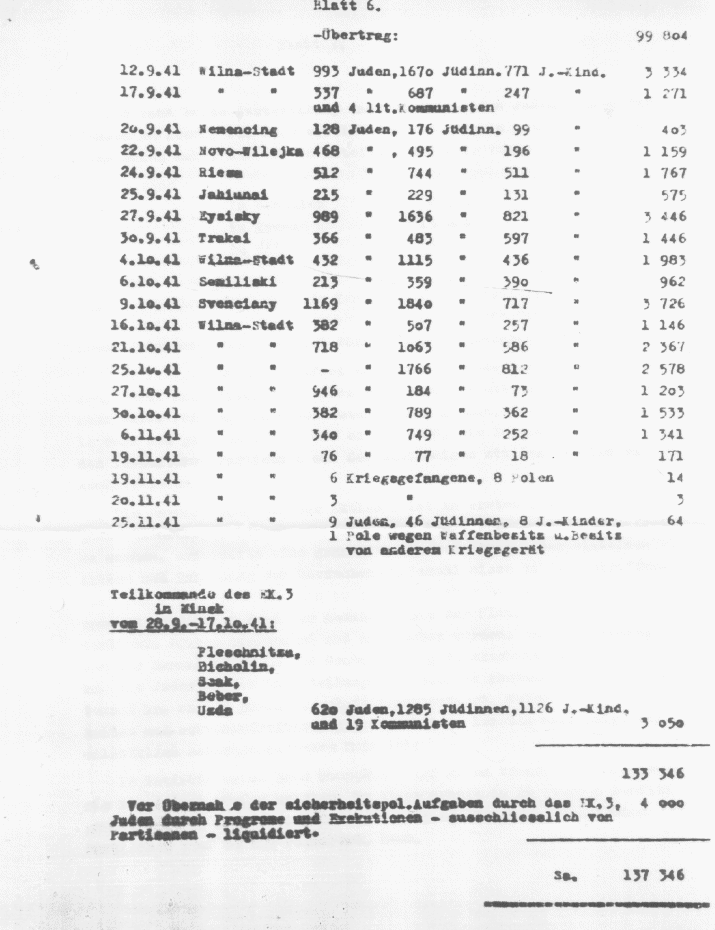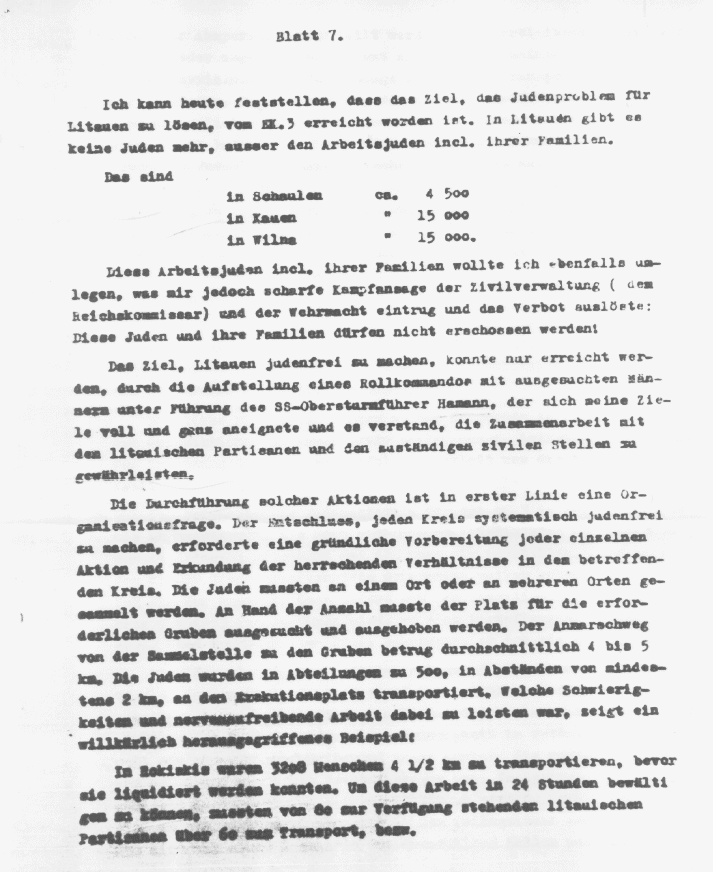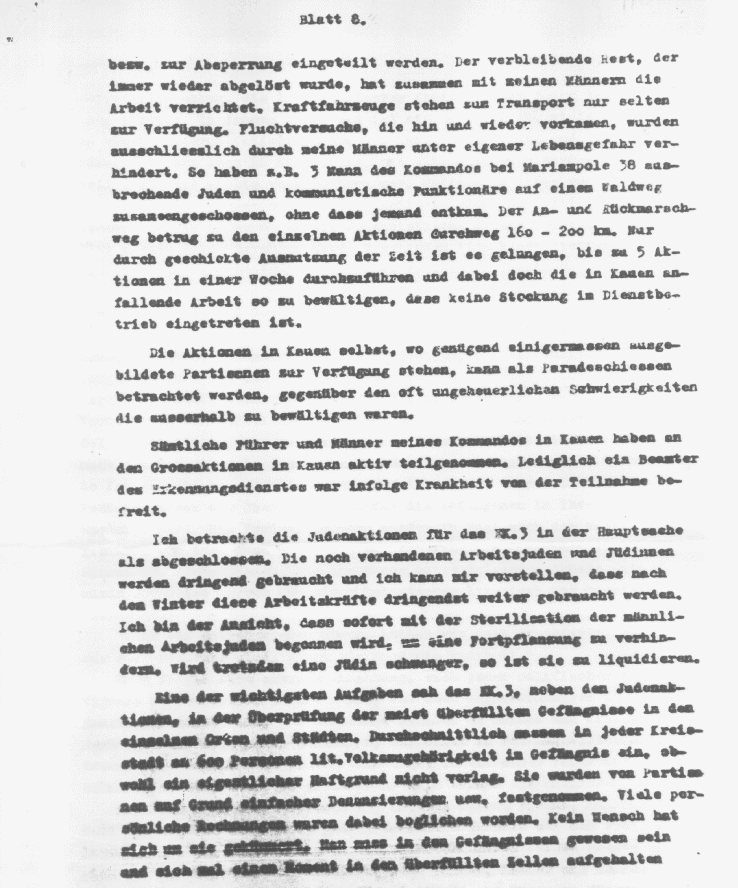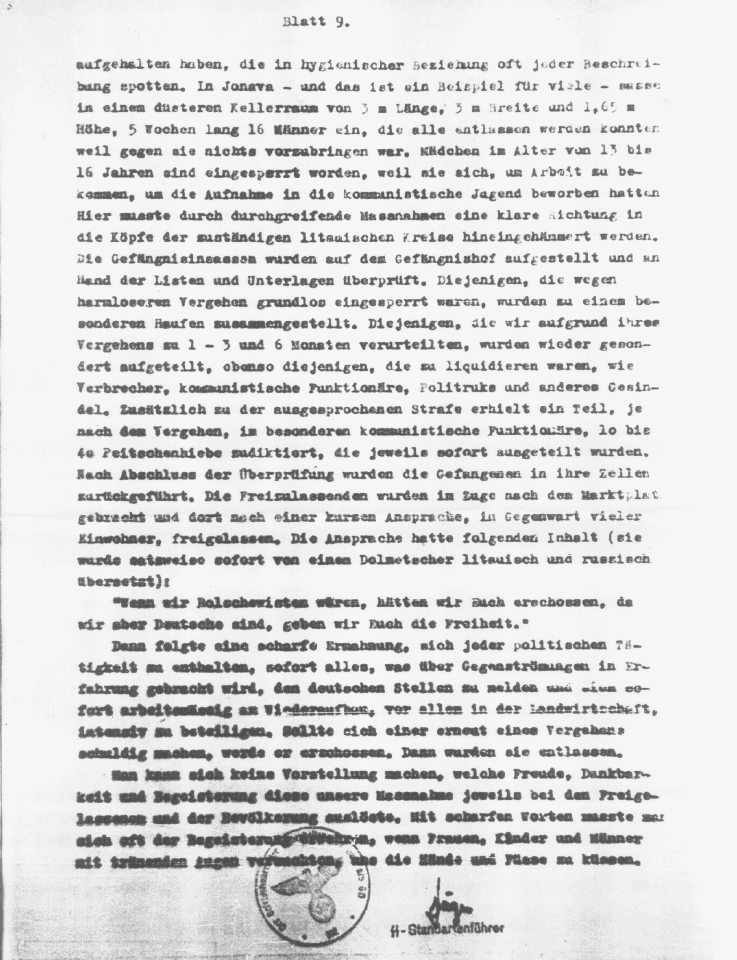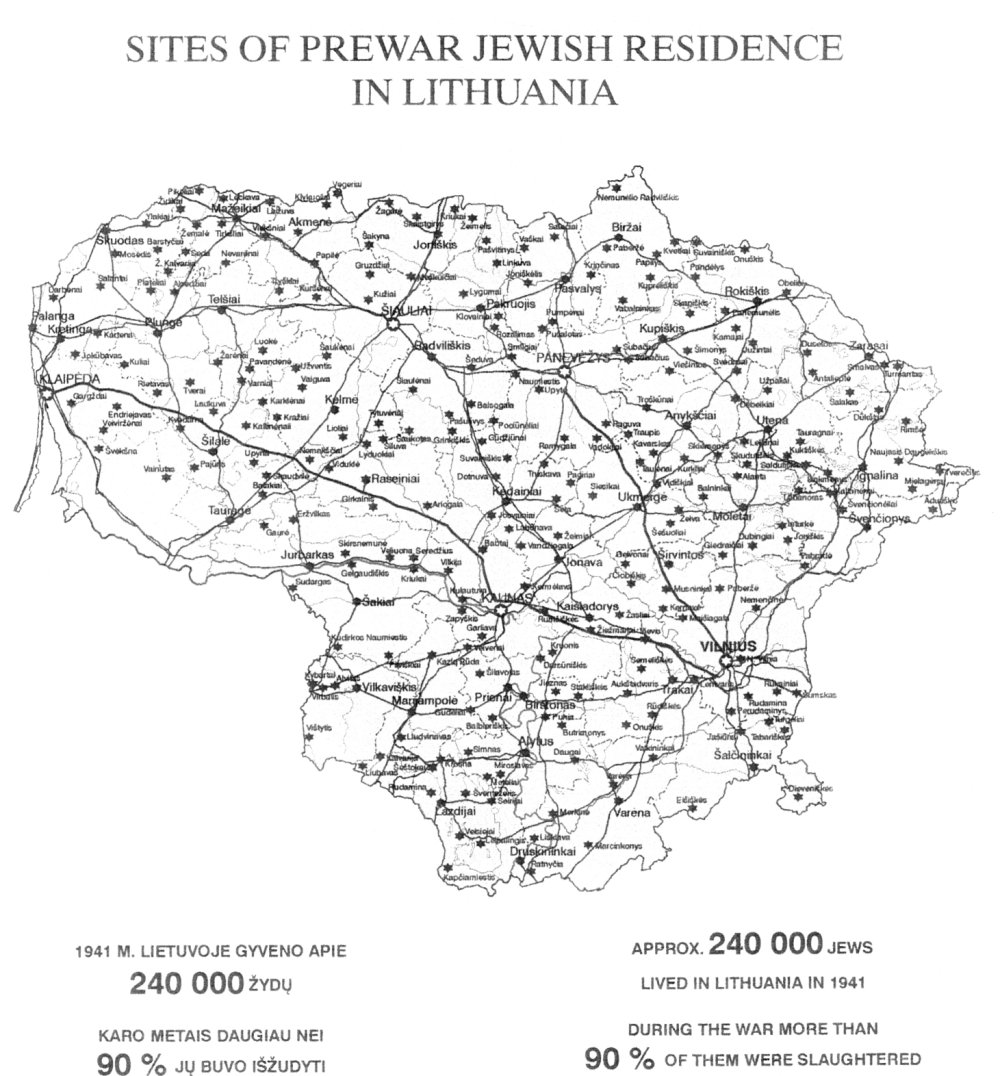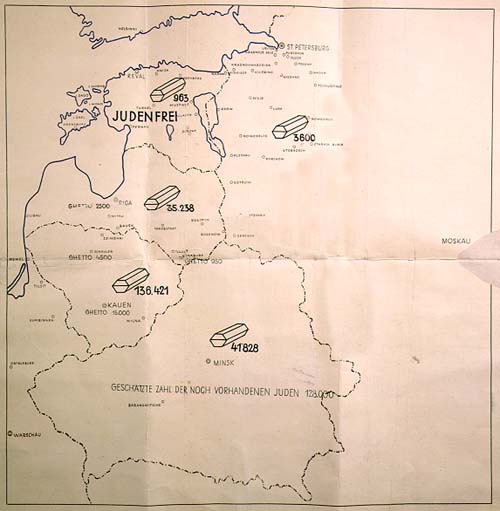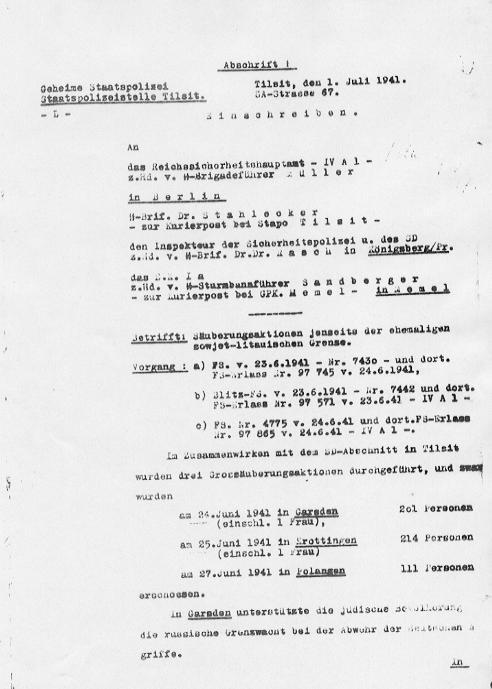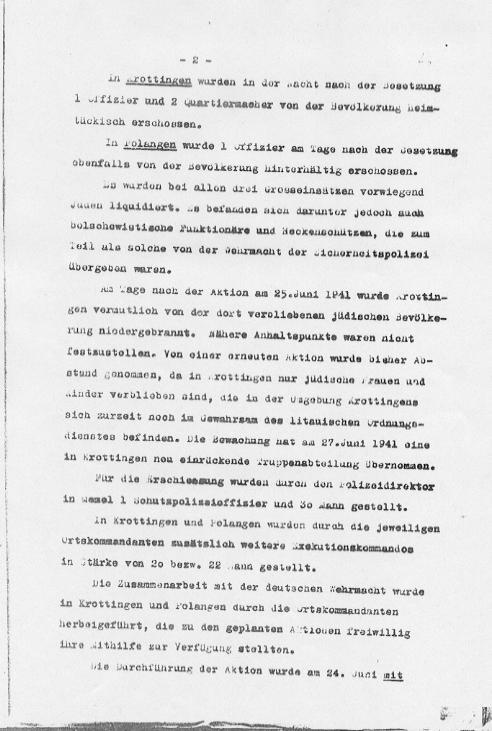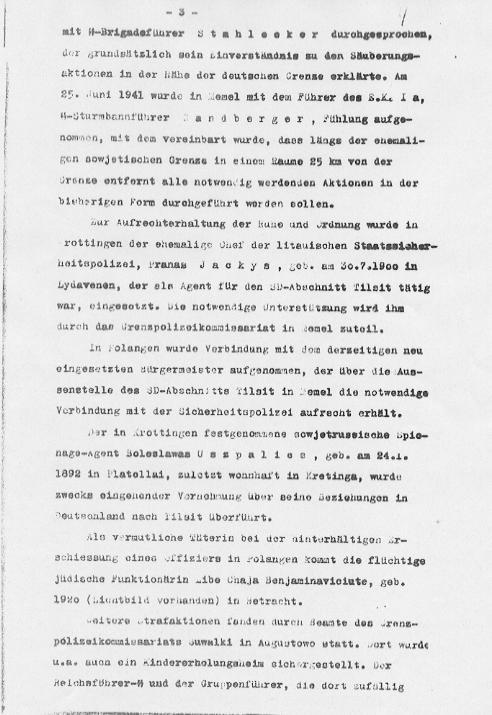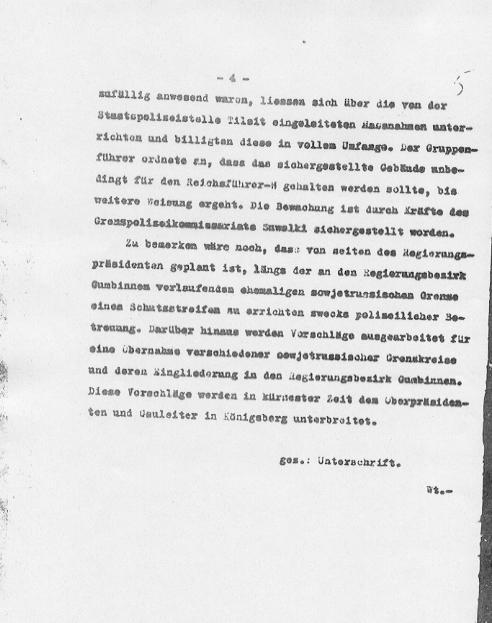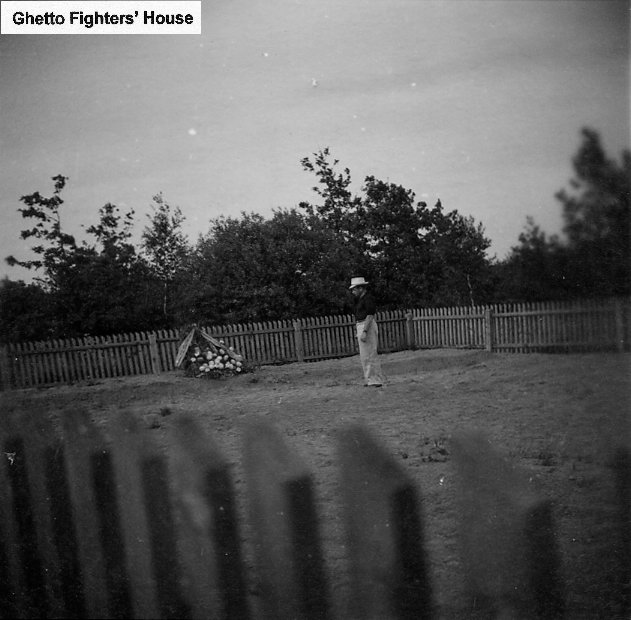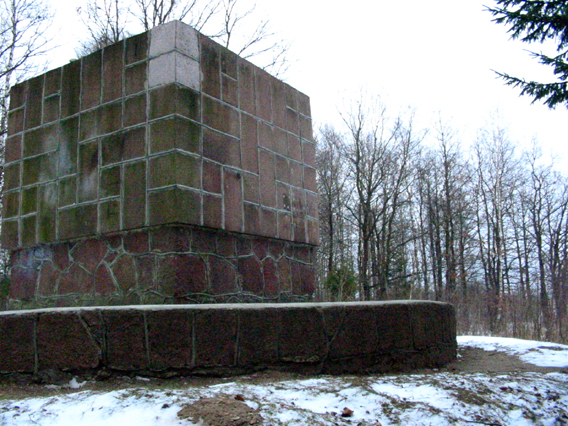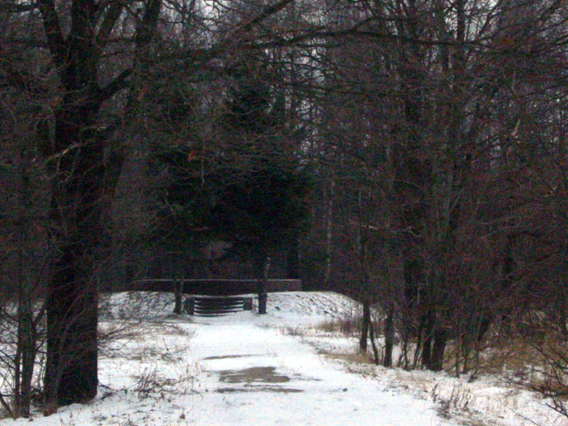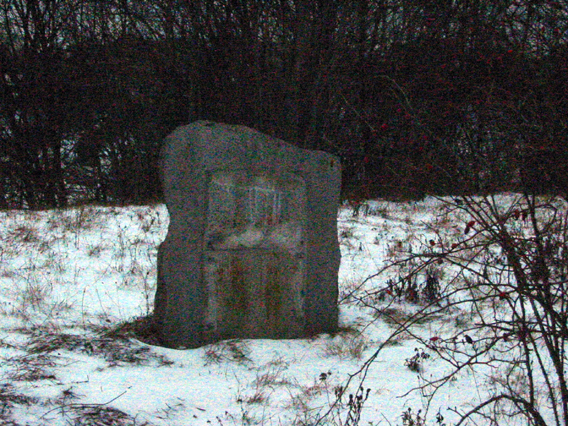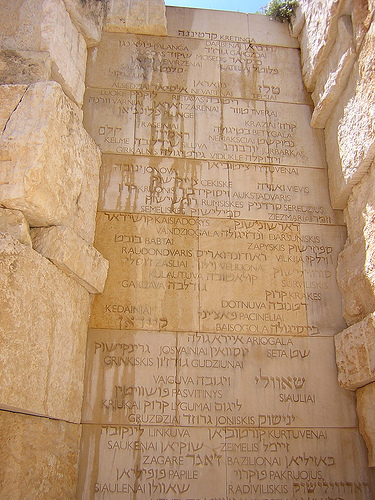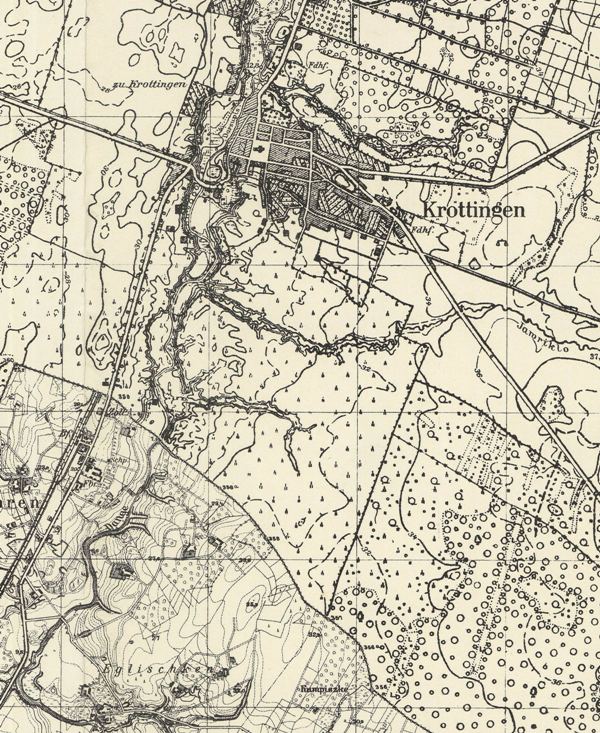

The Holocaust in Kretinga
55°53'N, 21°15'E
The Death of a Community - The Holocaust in Kretinga
Sources
This article is based on a series of articles that use original documentation as their factual basis. Please feel welcome to contact if you wish to correct or augment the information.
1 - There are a series of Wikipedia articles - Einsaztgruppen, Stahlecker etc..
2 - Kretinga. In. Dov Levin. 1996. Ed. Pinkas Hakehilot: Lite. Yad Vashem. Jerusalem Pp. 617-621.(Hebrew).
3 - Shtetl Links - Kretinga: http://www.shtetlinks.jewishgen.org/Kretinga/history.htm
4 - Eyewitness account of Shraga Alswang, Academy of Sciences of Soviet Lithuania.
5 - The Popular Massacres of Lithuania, Part II. Vilnius, 1973.
6 - Report from Stapo Tilsit,1 July 1941, on the killing of the Jews in Garsden, Krottingen and Polangen. http://www.shtetlinks.jewishgen.org/gargzdai/report.html
7 - 'Justiz und NS-Verbrechen' - lists of Nazi war trials.
8 - Article by Christoph Deickmann on the Extermination of Lithuanian Jewry (in Hebrew).
This article is based on a series of articles that use original documentation as their factual basis. Please feel welcome to contact if you wish to correct or augment the information.
1 - There are a series of Wikipedia articles - Einsaztgruppen, Stahlecker etc..
2 - Kretinga. In. Dov Levin. 1996. Ed. Pinkas Hakehilot: Lite. Yad Vashem. Jerusalem Pp. 617-621.(Hebrew).
3 - Shtetl Links - Kretinga: http://www.shtetlinks.jewishgen.org/Kretinga/history.htm
4 - Eyewitness account of Shraga Alswang, Academy of Sciences of Soviet Lithuania.
5 - The Popular Massacres of Lithuania, Part II. Vilnius, 1973.
6 - Report from Stapo Tilsit,1 July 1941, on the killing of the Jews in Garsden, Krottingen and Polangen. http://www.shtetlinks.jewishgen.org/gargzdai/report.html
7 - 'Justiz und NS-Verbrechen' - lists of Nazi war trials.
8 - Article by Christoph Deickmann on the Extermination of Lithuanian Jewry (in Hebrew).
KRETINGA
PALANGA
Baltic Sea
Cemetery
Prismanciai Prismantai
Synagogue
Like all the Jewish communities of Europe, Kretinga Jewry was devastated by the events of the Holocaust. Though not directly related to the actions of the German Nazis, the attitudes of the Lithuanian neighbours would become central, leading to the direct complicity of the local Police in the massacre of the Jews in Kretinga. The murder of the Jews of Kretinga and the adjacent towns of Palanga and Gargzdai are also important in the development of the holocaust as these were the first organised Nazi massacres of entire communities in Eastern Europe.
Pre War Anti Semitism
Anti Semitic incidents had been part of the life of Kretinga’s Jewish community during the interwar period of Lithuanian independence. The economic depression of the 1930s led to the rise of the antisemitic Lithuanian organisation of merchants (Verslas) who called for the boycott of Jewish traders. Furthermore, the proximity of the pro Nazi Germans in nearby Memel in East Prussia strongly influenced the growth of anti Jewish feeling across the border in Lithuania.
Pre War Anti Semitism
Anti Semitic incidents had been part of the life of Kretinga’s Jewish community during the interwar period of Lithuanian independence. The economic depression of the 1930s led to the rise of the antisemitic Lithuanian organisation of merchants (Verslas) who called for the boycott of Jewish traders. Furthermore, the proximity of the pro Nazi Germans in nearby Memel in East Prussia strongly influenced the growth of anti Jewish feeling across the border in Lithuania.
Map of the Kretinga Area showing the Massacre Sites at Prismanciai and at the Kretinga Jewish Cemetery
Significant anti-semitic episodes included the smearing of tar across shop fronts with Hebrew and Yiddish signs in 1928 and a blood libel that was repressed by the local authorities in 1936. The entrance of the Benedictine nunnery displayed the sign, "Entrance to strangers and particularly to Jews is forbidden". The situation deteriorated further after the Nazis annexed Memel to Germany in March 1939, causing an exodus of Jewish refugees. Some 300 refugees from Memel were absorbed by the Jewish community of Kretinga, raising the Jewish population just prior to the war from 700 to around 1000.
In 1940, as a result of the Molotov Ribbentrop Pact, Lithuania was occupied by the Soviet Union, who immediately nationalised the factories and the retail trade, much of which was in Jewish hands. All the Zionist parties and youth movements were disbanded and the Jewish educational institutions closed. Jews and Lithuanians who were politically anti-communist were arrested and seven ‘undesirable’ Jews were exiled to Siberia in June 1941, a move that paradoxically saved their lives. However, many Jews welcomed the new rulers and took an active part in its institutions and in the Soviet celebrations of October 1940.
In 1940, as a result of the Molotov Ribbentrop Pact, Lithuania was occupied by the Soviet Union, who immediately nationalised the factories and the retail trade, much of which was in Jewish hands. All the Zionist parties and youth movements were disbanded and the Jewish educational institutions closed. Jews and Lithuanians who were politically anti-communist were arrested and seven ‘undesirable’ Jews were exiled to Siberia in June 1941, a move that paradoxically saved their lives. However, many Jews welcomed the new rulers and took an active part in its institutions and in the Soviet celebrations of October 1940.
The Barbarossa Operation of Nazi Germany into the Soviet Union
The Baltic Front of Operation Barbarossa - June 22 to July 10 1941
Operation Barbarossa
Operation Barbarossa, Nazi Germany’s invasion of the Soviet Union, commenced on June 22nd 1941. On the heals of the invading Wehrmacht were mobile killing squads known as Einsatzgruppen divided into four groups (A, B, C and D, which were in turn divided into smaller units called Einsatzkommandos and Sonderkommandos. Einsatzgruppe A, commanded by SS - Brigadefuhrer Walter Stahlecker, was fomed to carry out mass executions of the Jewish population of Lithuania and other Baltic areas. Operating in Lithuania was Einsatzkommando 3 of Einsatzgruppe A, the deeds of which are described in detail in a report sent by its commander, Karl Jaeger, in December 1, 1941. In the report Jaeger totals the executions, town by town, outlined the deaths of 137000 Lithuanian Jews beginning in July 4, 1941.
Operation Barbarossa, Nazi Germany’s invasion of the Soviet Union, commenced on June 22nd 1941. On the heals of the invading Wehrmacht were mobile killing squads known as Einsatzgruppen divided into four groups (A, B, C and D, which were in turn divided into smaller units called Einsatzkommandos and Sonderkommandos. Einsatzgruppe A, commanded by SS - Brigadefuhrer Walter Stahlecker, was fomed to carry out mass executions of the Jewish population of Lithuania and other Baltic areas. Operating in Lithuania was Einsatzkommando 3 of Einsatzgruppe A, the deeds of which are described in detail in a report sent by its commander, Karl Jaeger, in December 1, 1941. In the report Jaeger totals the executions, town by town, outlined the deaths of 137000 Lithuanian Jews beginning in July 4, 1941.
However, the massacre of the Jews of three towns - Gargzdai, Palanga and Kretinga, start in the period between the Nazi invasion and commencement of the murders of Einsaztkommando 3. These killings were the first mass executions conducted by Germany and are regarded by many as the start of the Holocaust.
The Taking of Kretinga
On the 24th June 1941, the German's 61st Infantry Division of the 176 Brigade of the Nord Heeresgruppe led by General Major Robert Sattler, entered Kretinga without opposition. Either under orders of Dr. Walter Stahlecker, the Commander of Einsatzgruppe A, or more probably as we will see, on their own initiative, the group given the task to ‘deal’ with the communists and Jews in the Kretinga area was the Tilsit Gestapo of Eastern Prussia (now Sovetsk in Russia), under the command of Dr. Erich Frohwann and Edwin Sakut of the Memel Border Police. This military grouping, known as the Einsatzkommando Tilsit, was led by SS-Major Hans - Joachim Boehme. After filing a report back to their headquarters in Tilsit, their actions were copied on to Berlin in the "Operational Situation Report no. 14" , giving us a detailed insight into their evil doings in the days following the occupation of the Kretinga region.
With the Tilsit Einsatzkommando was a Lithuanian, Franas Lukys Pranas alias Jackys, the former chief of the Lithuanian state security police. After the Soviet occupation in 1940 he fled to Germany, returning with the Nazis with the position of Secret Police Commander in Kretinga. Under his command were a number of Lithuanian nationalist activists, headed by the monk Petras Yanrushaitas, a brother of the local minister.
On arrival in Kretinga, Jackys immediately ordered all the adult men of the town to assemble in the market square, separating the Jews into a designated corner. The gentiles were soon released, but the Jews were subjected to humiliation and torture. They were forced run around the square in a kneeling position while the Germans and Lithuanians beat them mercilessly with belts and clubs. This humiliation continued through the day and at twilight the Jews were forced into the synagogue in Megova Street.
On this same day the Lithuanian workers of Bezalel Cale Gillis drowned him in the dye vat of his own clothing factory.
The Taking of Kretinga
On the 24th June 1941, the German's 61st Infantry Division of the 176 Brigade of the Nord Heeresgruppe led by General Major Robert Sattler, entered Kretinga without opposition. Either under orders of Dr. Walter Stahlecker, the Commander of Einsatzgruppe A, or more probably as we will see, on their own initiative, the group given the task to ‘deal’ with the communists and Jews in the Kretinga area was the Tilsit Gestapo of Eastern Prussia (now Sovetsk in Russia), under the command of Dr. Erich Frohwann and Edwin Sakut of the Memel Border Police. This military grouping, known as the Einsatzkommando Tilsit, was led by SS-Major Hans - Joachim Boehme. After filing a report back to their headquarters in Tilsit, their actions were copied on to Berlin in the "Operational Situation Report no. 14" , giving us a detailed insight into their evil doings in the days following the occupation of the Kretinga region.
With the Tilsit Einsatzkommando was a Lithuanian, Franas Lukys Pranas alias Jackys, the former chief of the Lithuanian state security police. After the Soviet occupation in 1940 he fled to Germany, returning with the Nazis with the position of Secret Police Commander in Kretinga. Under his command were a number of Lithuanian nationalist activists, headed by the monk Petras Yanrushaitas, a brother of the local minister.
On arrival in Kretinga, Jackys immediately ordered all the adult men of the town to assemble in the market square, separating the Jews into a designated corner. The gentiles were soon released, but the Jews were subjected to humiliation and torture. They were forced run around the square in a kneeling position while the Germans and Lithuanians beat them mercilessly with belts and clubs. This humiliation continued through the day and at twilight the Jews were forced into the synagogue in Megova Street.
On this same day the Lithuanian workers of Bezalel Cale Gillis drowned him in the dye vat of his own clothing factory.
Click to see images of the infamous Jaeger Report detailing the murder of Lithuania's Jews
Map of Lithuania's Jewish Communities Prior to WWII
"Jewish Executions Carried Out by Einsatzgruppe A"
This map was attached as an appendix to the 1941 Stahlecker Report.
Marked "Secret Reich Matter", the map shows the number of Jews shot in the Baltic states, and reads at the bottom: "the estimated number of Jews still on hand is 128,000".
This map was attached as an appendix to the 1941 Stahlecker Report.
Marked "Secret Reich Matter", the map shows the number of Jews shot in the Baltic states, and reads at the bottom: "the estimated number of Jews still on hand is 128,000".
Report of the Tilsit Gestapo detailing the actions of the Tilsit Einsaztcommando in Krottingen (Kretinga) up till July 1st 1941
The First Massacre of Kretinga Jews
On 26th June the Germans, led by the Lithuanian Police, gathered 180 Jewish in a fenced plot on the ruins of the Provoslavic Church, which had been hit and destroyed in the first days of the war. In addition 30 Jewish men who had defied the assembly order were rounded up and forced to join the others in the square. At 5 pm the Jewish males were transported west, on the road from Kretinga to Palanga, to the farm of Prysmanciai (Prismantai), where the retreating Red Army had prepared anti-tank ditches. The Jews were forced to build embankments alongside of these ditches. The German plan was that the victims would stand on the embankments, be shot, and fall into the ditches. But, with evening approaching the embankments were not ready. To make them work faster, the Jews were beaten. The screams of the victims were heard from a great distance. With the completion of the preparations, the Jews were taken in groups of ten to the top of the embankments with their backs to the pits, facing the firing squads.
The Gestapo chief then read out the sentence of the Jews, “You are to be executed on the orders of the Fuhrer, as you have harmed the German army”. The firing squads consisted of 20 Nazi soldiers, including members of the Wehrmacht and Luftwaffe cadets and Lithuanian policemen. Those who did not die in the first volley were finished off individually by members of the Gestapo. Bodies that did not fall off the embankment were thrown into the pits by the following group of victims.
.
Among the victims were fathers and sons. In one group a boy of 12 was in line after his father. The father was counted the tenth of his group. The son begged the Germans to let him die with his father. The Gestapo officer agreed and removed another Jew from this group and allowed the boy to take his place. In a further incident a former World War I Jewish German officer displaying his Iron Cross First Class on his chest was removed from the line and taken to Memel. His fate though not known is clear.
On the same day 50 Lithuanian gentiles, accused of being Communists, were arrested. The Germans considered the number too high and brought them before an investigating board. After a short while, 30 were released, the remaining 20 meeting the same fate as the Jews.
On this day, the 26th July 1941, 214 Jewish men of Kretinga were murdered. The subsequent report (noted above) to SS-Brigadefurher Mueller In the Gestapo headquarters in Berlin, notes the euphemistically named 'mopping-up operations' in the former Soviet-Lithuanian border area, detailing the murder of over 500 Jews in the towns of Garsden (Gargzdai), Krottingen (Kretinga) and Polangen (Palanga). The report states that in Garsden and other towns the "Jewish population had supported the Russian border guards." The Germans were thus clearing the former border area of all Jews and communist sympathisers. Incredibily the document also shows that the killings were not undertaken on order of the Reich but were conducted voluntarily. Page three of the report testifies that, "The collaboration with the German armed forces was coordinated by the town commanding officers who voluntarily assisted with the planned operations. The implementation of the operation was discussed on June 24 with SS-Brigadefuhrer Stahlecker who basically declared his agreement with the mopping-up operations near the German border".
On 26th June the Germans, led by the Lithuanian Police, gathered 180 Jewish in a fenced plot on the ruins of the Provoslavic Church, which had been hit and destroyed in the first days of the war. In addition 30 Jewish men who had defied the assembly order were rounded up and forced to join the others in the square. At 5 pm the Jewish males were transported west, on the road from Kretinga to Palanga, to the farm of Prysmanciai (Prismantai), where the retreating Red Army had prepared anti-tank ditches. The Jews were forced to build embankments alongside of these ditches. The German plan was that the victims would stand on the embankments, be shot, and fall into the ditches. But, with evening approaching the embankments were not ready. To make them work faster, the Jews were beaten. The screams of the victims were heard from a great distance. With the completion of the preparations, the Jews were taken in groups of ten to the top of the embankments with their backs to the pits, facing the firing squads.
The Gestapo chief then read out the sentence of the Jews, “You are to be executed on the orders of the Fuhrer, as you have harmed the German army”. The firing squads consisted of 20 Nazi soldiers, including members of the Wehrmacht and Luftwaffe cadets and Lithuanian policemen. Those who did not die in the first volley were finished off individually by members of the Gestapo. Bodies that did not fall off the embankment were thrown into the pits by the following group of victims.
.
Among the victims were fathers and sons. In one group a boy of 12 was in line after his father. The father was counted the tenth of his group. The son begged the Germans to let him die with his father. The Gestapo officer agreed and removed another Jew from this group and allowed the boy to take his place. In a further incident a former World War I Jewish German officer displaying his Iron Cross First Class on his chest was removed from the line and taken to Memel. His fate though not known is clear.
On the same day 50 Lithuanian gentiles, accused of being Communists, were arrested. The Germans considered the number too high and brought them before an investigating board. After a short while, 30 were released, the remaining 20 meeting the same fate as the Jews.
On this day, the 26th July 1941, 214 Jewish men of Kretinga were murdered. The subsequent report (noted above) to SS-Brigadefurher Mueller In the Gestapo headquarters in Berlin, notes the euphemistically named 'mopping-up operations' in the former Soviet-Lithuanian border area, detailing the murder of over 500 Jews in the towns of Garsden (Gargzdai), Krottingen (Kretinga) and Polangen (Palanga). The report states that in Garsden and other towns the "Jewish population had supported the Russian border guards." The Germans were thus clearing the former border area of all Jews and communist sympathisers. Incredibily the document also shows that the killings were not undertaken on order of the Reich but were conducted voluntarily. Page three of the report testifies that, "The collaboration with the German armed forces was coordinated by the town commanding officers who voluntarily assisted with the planned operations. The implementation of the operation was discussed on June 24 with SS-Brigadefuhrer Stahlecker who basically declared his agreement with the mopping-up operations near the German border".
The Transport to Prysmanciai
Later the same day some of the women and children were transported from the synagogue to Prysmanciai Farm where they were herded into the stables. During the night of 26th July a fire broke out in the synagogue quickly spreading to the surrounding area. The Jews were accused of arson. As punishment, on 28th June a further 63 men were taken from the Prysmanciai Farm and executed, followed by 15 more on subsequent days.
More Humiliation and Executions
Other Jewish men were imprisoned in the local jail under the watch of Lithuanian guards. In the board of inquiry after the German defeat, a witness, Antanas Betzanicius, reported that he had seen 80 Jews being taken out of the cells to the Akmena river bank and forced to crawl from the bank down to the river. Those who did not crawl fast
Later the same day some of the women and children were transported from the synagogue to Prysmanciai Farm where they were herded into the stables. During the night of 26th July a fire broke out in the synagogue quickly spreading to the surrounding area. The Jews were accused of arson. As punishment, on 28th June a further 63 men were taken from the Prysmanciai Farm and executed, followed by 15 more on subsequent days.
More Humiliation and Executions
Other Jewish men were imprisoned in the local jail under the watch of Lithuanian guards. In the board of inquiry after the German defeat, a witness, Antanas Betzanicius, reported that he had seen 80 Jews being taken out of the cells to the Akmena river bank and forced to crawl from the bank down to the river. Those who did not crawl fast
The Kretinga Synagogue before WWII
enough were severely beaten with clubs. Later the guards forced them into the
river to swim from bank to bank. Those who did not succeed were shot in the river. Afterwards the survivors were returned to the cells.
Between July 11th to the 18th, 120 men were taken from the jail to be shot at the Jewish cemetery and in mid-August, 20 women and children, members of families of 15 men already murdered, were executed.
Between July 11th to the 18th, 120 men were taken from the jail to be shot at the Jewish cemetery and in mid-August, 20 women and children, members of families of 15 men already murdered, were executed.
Lithuanian Complicity
At the beginning of August a meeting was held at the headquarters of the military governor of the region. Sedviatas, the Mayor of Kretinga; Piktucius, the Secret Police Commander; Jackys, the Police Commander; Patriusikas, commander of the nationalist activists of the region, and a number of Gestapo officers, attended.
Various problems of the region were discussed, among them the problem of providing for the remaining Jewish population. The Germans suggested that the Lithuanians exterminate the Jewish women and children as they were not worth feeding, nor were they of value as labourers. They also recommended that the Lithuanians carry out the executions themselves. The Lithuanians hesitated, declaring that they had no orders to do so from Kaunas (Kovno), delaying the decision until the next day. In the meanwhile the Chief of Police in Kaunas telephoned and told them that no central decision had been made to carry out the murder of women and children, leaving the judgment to the local commanders. Understanding the agenda, the Lithuanian leaders of Kretinga and prepared to carry out the execution of the women and children at the beginning of September.
At the beginning of August a meeting was held at the headquarters of the military governor of the region. Sedviatas, the Mayor of Kretinga; Piktucius, the Secret Police Commander; Jackys, the Police Commander; Patriusikas, commander of the nationalist activists of the region, and a number of Gestapo officers, attended.
Various problems of the region were discussed, among them the problem of providing for the remaining Jewish population. The Germans suggested that the Lithuanians exterminate the Jewish women and children as they were not worth feeding, nor were they of value as labourers. They also recommended that the Lithuanians carry out the executions themselves. The Lithuanians hesitated, declaring that they had no orders to do so from Kaunas (Kovno), delaying the decision until the next day. In the meanwhile the Chief of Police in Kaunas telephoned and told them that no central decision had been made to carry out the murder of women and children, leaving the judgment to the local commanders. Understanding the agenda, the Lithuanian leaders of Kretinga and prepared to carry out the execution of the women and children at the beginning of September.
The Kretinga Jewish Cemetery
The Site of the Murder and Burial of 356 of Kretinga's Jews
The Site of the Murder and Burial of 356 of Kretinga's Jews
The End of Kretinga Jewry
A group of 120 women, children and old men were still being held at the Prysmanciai stables. They were told that the heads of their families had been taken to a separate labour camp and that their request to join their husbands had been granted in the beginning of September.
The victims were assembled, taken to a nearby threshing hall and told that they would undergo a medical examination. Each in turn disrobed and stepped outside. As each person came out, the Lithuanian policemen fell upon them with branches, iron bars, bayonets and knives, beating and stabbing them. The known leaders of the Police involved in the murders were Pranas Lykas-Jackys, Shilgas and Barazsinkas. Throughout, the Tilsit Gestapo stood watching and photographed this event. The remaining Jews were late murdered by shooting.
The Sad Conclusion
Between June and July 1941 700 Kretinga Jews died at Prysmanciai in the Kveciai Wood. A further 356 were murdered and buried in August 1941 in the Kretinga Jewish cemetery ending Jewish life in Kretinga. A memory page to Kretinga's Jews can be found here. After the war the Soviets established a commission to report on the war crimes in Kretinga.
A group of 120 women, children and old men were still being held at the Prysmanciai stables. They were told that the heads of their families had been taken to a separate labour camp and that their request to join their husbands had been granted in the beginning of September.
The victims were assembled, taken to a nearby threshing hall and told that they would undergo a medical examination. Each in turn disrobed and stepped outside. As each person came out, the Lithuanian policemen fell upon them with branches, iron bars, bayonets and knives, beating and stabbing them. The known leaders of the Police involved in the murders were Pranas Lykas-Jackys, Shilgas and Barazsinkas. Throughout, the Tilsit Gestapo stood watching and photographed this event. The remaining Jews were late murdered by shooting.
The Sad Conclusion
Between June and July 1941 700 Kretinga Jews died at Prysmanciai in the Kveciai Wood. A further 356 were murdered and buried in August 1941 in the Kretinga Jewish cemetery ending Jewish life in Kretinga. A memory page to Kretinga's Jews can be found here. After the war the Soviets established a commission to report on the war crimes in Kretinga.
Prysmanciai
The Mass Grave
The Mass Grave
The Kretinga Jewish Cemetery
Memorial at the Site of the Murder and Burial of 356 of Kretinga's Jews
Memorial at the Site of the Murder and Burial of 356 of Kretinga's Jews
Prysmanciai
The Memorial built above the Mass Grave for 700 Victims from Nazi Germany and Lithuanian Complicity
The Memorial built above the Mass Grave for 700 Victims from Nazi Germany and Lithuanian Complicity
Memorial to Lithuanian Communities ay Yad Vashem, Jerusalem
Kretinga is inscribed at the top
Kretinga is inscribed at the top
Justice for the Murdered?
The following case details are official court records of endictments brought against some of the perpetrators of the extermination of the Jews of Kretinga and the surrounding area. Given the severity of the crimes, the lightness of the sentences delivered is outrageous. Then what were we to expect from German justice!!
Case no. 465, at Ulm in Germany, 29th August 1958, Federal Supreme Court, 23 February 1960
Crime Category: Mass Extermination Crimes by Einsatzgruppen
Accused: Sentence:
Behrendt, Franz 5 Years 3 Months
Boehme, Hans-Joachim 15 Years (SS-Sturmbannfuhrer Dr. jur. Hans-Joachim Boehme, commander of Einsazgruppe Tilsit)
Carsten, Gerhard 4 Years
Fischer Schweder, Bernhard 10 Years
Harms, Harm Willms 3 Years
Hersmann, Werner 15 Years
Kreuzmann, Werner 5 Years
Sakuth, Edwin 3½ Years (Commander of the Memel Border Police, a part of the Einsaztgruppe Tilsit)
Crime Location: Garsden, Krottingen, Augustowo, Polangen, Szweksznie, Tauroggen, Georgenburg, Wladislawa, Schmalleningken, Wirballen, Kybarty, Vevirzeniai, Wilkowischken, Calvaria (Krs.Mariampol), Wirballen, Heydekrug, Kolleschen, Batakai, Mariampol, Pilwischken, Skaudville, Vainutas, Erschwilkis, Schilale in Lithuania.
Crime Date: June 1941 to September 1941
Victims: Jews, Civilians Nationality: Lithuanian, Soviet
Office: Polizei Gestapo Tilsit, Polizei SD Tilsit, Einsatzgruppen EK Stapo und SD Tilsit, Polizei Polizeidirektion Memel, Polizei Schupo Memel, Polizei Lithuanian Police Krottingen
Subject of the proceeding: Mass and individual shootings of several thousand Jews and communists (men, women and children) within an area of approximately 25 km from Memelland, directly across the former border between East-Prussia and Lithuania, during the first three months after the invasion of the German troops into the Baltics.
Source - Justiz und NS-Verbrechen Vol. XV
Case no. 499, at Ulm in Germany, 3rd November 1960 Crime Category: Mass Extermination Crimes by Einsatzgruppen
Accused: Sentence:
Lukys alias Jakys, Pranas 5 Years (Chief of Nazi appointed Lithuanian Police in Kretinga)
Schmidt-Hammer, Werner 3 Years
Crime Location: Garsden, Krottingen, Polangen in Lithuania
Crime Date: June 1941 to September 1941
Victims: Jews, Civilians Nationality: Lithuanian, Soviet
Office: Polizei Schupo Memel, Polizei Lithuanian Police Krottingen
Subject of the proceeding: Mass and individual shootings of several thousand Jews and communists (men, women and children) within an area of approximately 25 km from Memelland, directly across the former border between East-Prussia and Lithuania, during the first three months after the invasion of the German troops into the Baltics.
Source - Justiz und NS-Verbrechen Vol. XVI
Case no. 509, at Tubingen in Germany, 10th October 1961 Crime Category: Mass Extermination Crimes by Einsatzgruppen
Accused: Sentence:
Schulz, Bruno Heinrich 3½ Years
Wiechert, Hans Richard 4½ Years
Crime Location: Krottingen, Polangen, Tauroggen, Georgenburg, Wirballen, Kybarty, Wilkowischken, unknown (in the area alongside the former German/Lithuanian border) in Lithuania
Crime Date: June 1941 to August 1941
Victims: Jews, Civilians Nationality: Lithuanian, Soviet
Office: Polizei Gestapo Tilsit, Einsatzgruppen EK Stapo und SD Tilsit
Subject of the proceeding: Mass and individual shootings of several thousand Jews and communists (men, women and children) within an area of approximately 25 km from Memelland, directly across the former border between East-Prussia and Lithuania, during the first three months after the invasion of the German troops into the Baltics
Source: Justiz und NS-Verbrechen Vol. XVII
Case no. 521, at Dortmund in Germany, 12th October 1961 Crime Category: Mass Extermination Crimes by Einsatzgruppen, War Crimes
Accused: Sentence:
Jahr, Ernst-Hermann 3 Years 3 Months
Crime Location: Garsden, Krottingen, Polangen, Tauroggen, Georgenburg, Wirballen, Kybarty, Wilkowischken, Heydekrug, Pogegenin Lithuania.
Crime Date: June 1941 to September 194; 1942-1944
Victims: Jews, Civilians, Prisoners of War Nationality: Lithuanian, Soviet
Office: Polizei Gestapo Tilsit, Polizei Grenzpolizei Eydtkau
Subject of the proceeding: Mass and individual shootings of several thousand Jews and communists (men, women and children) within an area of approximately 25 km from Memelland, directly across the former border between East-Prussia and Lithuania, during the first three months after the invasion of the German troops into the Baltics. Shooting of 10 Jewish women and children locked up in the Wilkowischken police prison (early 1942). Shooting of 6 Jewish forced laborers after the conclusion of the 'exhumation action' near Tauroggen close to the end of the year 1943.
Source: Justiz und NS-Verbrechen Vol. XVII
Case no. 547at Dortmund in Germany, 5th February 1963 and Federal Supreme Court 7th September 1962
Crime Category: Mass Extermination Crimes by Einsatzgruppen, War Crimes
Accused: Sentence:
Gerke, Wilhelm B.W. 5 Years
Krumbach, Alfred 4½ Years
Crime Location: Garsden, Krottingen, Polangen, Tauroggen, Georgenburg, Wirballen, Kybarty, Wilkowischken, Heydekrug, Pogegen in Lithuania.
Crime Date: June 1941 to September 194; 1942-1944
Victims: Jews, Civilians, Prisoners of War Nationality: Lithuanian, Soviet
Office: Polizei Gestapo Tilsit, Polizei Grenzpolizei Eydtkau
Subject of the proceeding: Mass and individual shootings of several thousands of Jews and communistst (men, women and children) within an area of approximately 25 km from Memelland, directly across the former border between East-Prussia and Lithuania, during the first three months after the invasion of the German troops into the Baltics. Shooting of 10 Jewish women and children locked up in the police prison of Wilkowischken (early 1942). Shooting of at least 300 Russian POW's near Pogegen in accordance with the 'Commissar Order' ('Kommissarbefehl') (July/August 1941).
Source: Justiz und NS-Verbrechen Vol. XIX
The following case details are official court records of endictments brought against some of the perpetrators of the extermination of the Jews of Kretinga and the surrounding area. Given the severity of the crimes, the lightness of the sentences delivered is outrageous. Then what were we to expect from German justice!!
Case no. 465, at Ulm in Germany, 29th August 1958, Federal Supreme Court, 23 February 1960
Crime Category: Mass Extermination Crimes by Einsatzgruppen
Accused: Sentence:
Behrendt, Franz 5 Years 3 Months
Boehme, Hans-Joachim 15 Years (SS-Sturmbannfuhrer Dr. jur. Hans-Joachim Boehme, commander of Einsazgruppe Tilsit)
Carsten, Gerhard 4 Years
Fischer Schweder, Bernhard 10 Years
Harms, Harm Willms 3 Years
Hersmann, Werner 15 Years
Kreuzmann, Werner 5 Years
Sakuth, Edwin 3½ Years (Commander of the Memel Border Police, a part of the Einsaztgruppe Tilsit)
Crime Location: Garsden, Krottingen, Augustowo, Polangen, Szweksznie, Tauroggen, Georgenburg, Wladislawa, Schmalleningken, Wirballen, Kybarty, Vevirzeniai, Wilkowischken, Calvaria (Krs.Mariampol), Wirballen, Heydekrug, Kolleschen, Batakai, Mariampol, Pilwischken, Skaudville, Vainutas, Erschwilkis, Schilale in Lithuania.
Crime Date: June 1941 to September 1941
Victims: Jews, Civilians Nationality: Lithuanian, Soviet
Office: Polizei Gestapo Tilsit, Polizei SD Tilsit, Einsatzgruppen EK Stapo und SD Tilsit, Polizei Polizeidirektion Memel, Polizei Schupo Memel, Polizei Lithuanian Police Krottingen
Subject of the proceeding: Mass and individual shootings of several thousand Jews and communists (men, women and children) within an area of approximately 25 km from Memelland, directly across the former border between East-Prussia and Lithuania, during the first three months after the invasion of the German troops into the Baltics.
Source - Justiz und NS-Verbrechen Vol. XV
Case no. 499, at Ulm in Germany, 3rd November 1960 Crime Category: Mass Extermination Crimes by Einsatzgruppen
Accused: Sentence:
Lukys alias Jakys, Pranas 5 Years (Chief of Nazi appointed Lithuanian Police in Kretinga)
Schmidt-Hammer, Werner 3 Years
Crime Location: Garsden, Krottingen, Polangen in Lithuania
Crime Date: June 1941 to September 1941
Victims: Jews, Civilians Nationality: Lithuanian, Soviet
Office: Polizei Schupo Memel, Polizei Lithuanian Police Krottingen
Subject of the proceeding: Mass and individual shootings of several thousand Jews and communists (men, women and children) within an area of approximately 25 km from Memelland, directly across the former border between East-Prussia and Lithuania, during the first three months after the invasion of the German troops into the Baltics.
Source - Justiz und NS-Verbrechen Vol. XVI
Case no. 509, at Tubingen in Germany, 10th October 1961 Crime Category: Mass Extermination Crimes by Einsatzgruppen
Accused: Sentence:
Schulz, Bruno Heinrich 3½ Years
Wiechert, Hans Richard 4½ Years
Crime Location: Krottingen, Polangen, Tauroggen, Georgenburg, Wirballen, Kybarty, Wilkowischken, unknown (in the area alongside the former German/Lithuanian border) in Lithuania
Crime Date: June 1941 to August 1941
Victims: Jews, Civilians Nationality: Lithuanian, Soviet
Office: Polizei Gestapo Tilsit, Einsatzgruppen EK Stapo und SD Tilsit
Subject of the proceeding: Mass and individual shootings of several thousand Jews and communists (men, women and children) within an area of approximately 25 km from Memelland, directly across the former border between East-Prussia and Lithuania, during the first three months after the invasion of the German troops into the Baltics
Source: Justiz und NS-Verbrechen Vol. XVII
Case no. 521, at Dortmund in Germany, 12th October 1961 Crime Category: Mass Extermination Crimes by Einsatzgruppen, War Crimes
Accused: Sentence:
Jahr, Ernst-Hermann 3 Years 3 Months
Crime Location: Garsden, Krottingen, Polangen, Tauroggen, Georgenburg, Wirballen, Kybarty, Wilkowischken, Heydekrug, Pogegenin Lithuania.
Crime Date: June 1941 to September 194; 1942-1944
Victims: Jews, Civilians, Prisoners of War Nationality: Lithuanian, Soviet
Office: Polizei Gestapo Tilsit, Polizei Grenzpolizei Eydtkau
Subject of the proceeding: Mass and individual shootings of several thousand Jews and communists (men, women and children) within an area of approximately 25 km from Memelland, directly across the former border between East-Prussia and Lithuania, during the first three months after the invasion of the German troops into the Baltics. Shooting of 10 Jewish women and children locked up in the Wilkowischken police prison (early 1942). Shooting of 6 Jewish forced laborers after the conclusion of the 'exhumation action' near Tauroggen close to the end of the year 1943.
Source: Justiz und NS-Verbrechen Vol. XVII
Case no. 547at Dortmund in Germany, 5th February 1963 and Federal Supreme Court 7th September 1962
Crime Category: Mass Extermination Crimes by Einsatzgruppen, War Crimes
Accused: Sentence:
Gerke, Wilhelm B.W. 5 Years
Krumbach, Alfred 4½ Years
Crime Location: Garsden, Krottingen, Polangen, Tauroggen, Georgenburg, Wirballen, Kybarty, Wilkowischken, Heydekrug, Pogegen in Lithuania.
Crime Date: June 1941 to September 194; 1942-1944
Victims: Jews, Civilians, Prisoners of War Nationality: Lithuanian, Soviet
Office: Polizei Gestapo Tilsit, Polizei Grenzpolizei Eydtkau
Subject of the proceeding: Mass and individual shootings of several thousands of Jews and communistst (men, women and children) within an area of approximately 25 km from Memelland, directly across the former border between East-Prussia and Lithuania, during the first three months after the invasion of the German troops into the Baltics. Shooting of 10 Jewish women and children locked up in the police prison of Wilkowischken (early 1942). Shooting of at least 300 Russian POW's near Pogegen in accordance with the 'Commissar Order' ('Kommissarbefehl') (July/August 1941).
Source: Justiz und NS-Verbrechen Vol. XIX
Copyright © 2007-8 Jon Seligman. All Rights Reserved.
The Shtetl of the Gillis Family



Nazi Map of Kretinga area after the Molotov-Ribbentrop Pact
This map shows the border between East Prussia and the Soviet Union in 1941. Kretinga was only two-kilometres from the Nazi border until Operation Barbarossa. The German customs house (red dot) is clearly marked alongside the rail station to Memel (Klaipeda)
This map shows the border between East Prussia and the Soviet Union in 1941. Kretinga was only two-kilometres from the Nazi border until Operation Barbarossa. The German customs house (red dot) is clearly marked alongside the rail station to Memel (Klaipeda)
USSR (Lithuania)
Germany (East Prussia)
